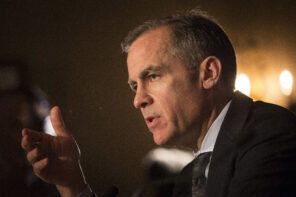For years, Canadians have complained about the cost of domestic air travel. A round trip between Montreal and Toronto would set one back $300 on average. This is in stark contrast to the US, where an even longer flight from Boston to DC would cost around $83. Having said that, the concept of ultra-low-cost travel is not entirely new to Canadian travellers. Numerous carriers, namely Zoom, JetsGo, and Canada 3000, have tried their hands at creating a market for no-frills, low-cost travel, but all of them failed miserably and are now defunct. While their failures could largely be attributed to external conditions like Canada’s expansive geography and lack of secondary airports, COVID-19 has exposed why this business model continues to fail, specifically in Canada.
Examining the way the US aviation market has performed during the pandemic is useful in understanding the opportunity, or even the potential threat, that the Canadian industry faces.
Examining the way the US aviation market has performed during the pandemic is useful in understanding the opportunity, or even the potential threat, that the Canadian industry faces. According to the Transportation Security Administration, the US has seen an 80 percent recovery in demand for air travel from the start of the pandemic. This kind of recovery is huge, given that demand for air travel in Canada is still only 25 percent of what it was in 2019. Even though the US market has seen a considerable recovery in demand, it has yet to see a recovery in terms of sales revenue. Full-service carriers in the US like Delta and United have only earned 48 and 56 percent of their 2019 revenues in 2021, respectively. This lag in revenue recovery can be explained by the full-service business model that airlines like Delta and United are using. Although most of their flights are operating at close to full capacity, the seats that fill up are predominantly economy class seats. While these seats can help in the process of recovering costs to some extent, full-service carriers are heavily dependent on sales in the business and first-class segments to break even.
Full-service carriers are heavily dependent on sales in the business and first-class segments to break even.
The Canadian aviation industry is dominated by two full-service carriers, Air Canada and WestJet, both of whom have a combined market share of 80 percent. Considering that the Canadian aviation industry has only seen a 25 per cent recovery in demand since 2019, this duopoly of full-service carriers appears to be a threat to the market. It is highly likely that once travel restrictions ease up, Canada, just like the US, will first see a surge in demand for leisure travel without a corresponding increase in demand for corporate travel. This can be attributed to the pandemic, which has made top corporate travel spenders like KPMG and Microsoft make work from home the norm to save both costs and time. Executives from these corporations have a tendency to fly on first and business class cabins of these full-service carriers and book their tickets only a few days in advance for much higher prices. This is in contrast to leisure travellers who typically fly economy class and buy tickets months in advance for prices that are below operating costs. Thus, while there could be a surge in demand driven by leisure-focused travellers, the lack of takers for lucrative first and business class seats would mean that full-service carriers would earn less per seat, subsequently reducing their revenue.
Unfortunately for Canadian travellers, this would only aggravate the issue of unaffordable travel as the airlines would pass on the sunk maintenance costs of first and business class cabins to the economy travellers. Additionally, airlines like WestJet and Air Canada would be unable to cover the costs of the extensive range of slots they own at hubs like Toronto, Montreal, and Vancouver. Slots, which are authorizations that airlines have to take off or land at particular airports during specified time periods, would be underutilised by leisure travellers. These slots, especially the non-peak hour ones, exist primarily to provide flexibility of travel to corporate travellers. This would waste not only the cost of the slot but also the fuel costs incurred on empty flights. Consequently, Canadian travellers, with a lack of cost-efficient alternatives, would be forced to opt for these full-service carriers once again. Meanwhile, in the US, price elastic travellers would be able to avoid these costs passed onto them by opting for low-cost carriers like Southwest.
With these full-service airlines passing on their sunk costs to leisure travellers, airlines like Flair could win over demand by lowering their prices further and penetrating the market.
While Canadian travellers could potentially opt for low-cost airlines like Flair, the airline has simply not been able to operate at a large enough scale. In an attempt to emulate the ultra-low-cost model followed by Southwest, Flair charges customers separately for any services availed in addition to the base fare. For instance, for a round trip between Toronto and Montreal, Flair charges a $120 base fare. If a traveller decides to check a bag, they would have to pay an additional $80. Moreover, if the traveller forgets to check in online, they would have to pay an additional $15 at the airport to cover the airlines’ labour costs. Pre-pandemic, with all the added costs, many travellers would rather purchase Air Canada’s $250 round trip between the same cities with all the services included in the base price. However, if the pandemic’s effect on the aviation industry in Canada emulates the one in the US, full-service carriers like Air Canada would lose their corporate travel base and would end up with lower sales revenue and less market power. With these full-service airlines passing on their sunk costs to leisure travellers, airlines like Flair could win over demand by lowering their prices further and penetrating the market.
Overall, compared to before the pandemic, flying is not only unfeasible for travellers but for large airlines as well. A drop in sales revenue, especially for full-service carriers should signal that their product is unable to cater to the needs of the market. As the once-lucrative corporate clients continue to transition to work-from-home policies, premium carriers will be forced to implement a low-cost model to sustain their operations. This leaves the door open for low-cost carriers like Flair, whose main difficulties have come from the high barrier to entry set by the likes of Air Canada and WestJet. With the playing field somewhat leveled, it will be interesting to see how the Canadian airline industry changes as the end of the pandemic nears.








